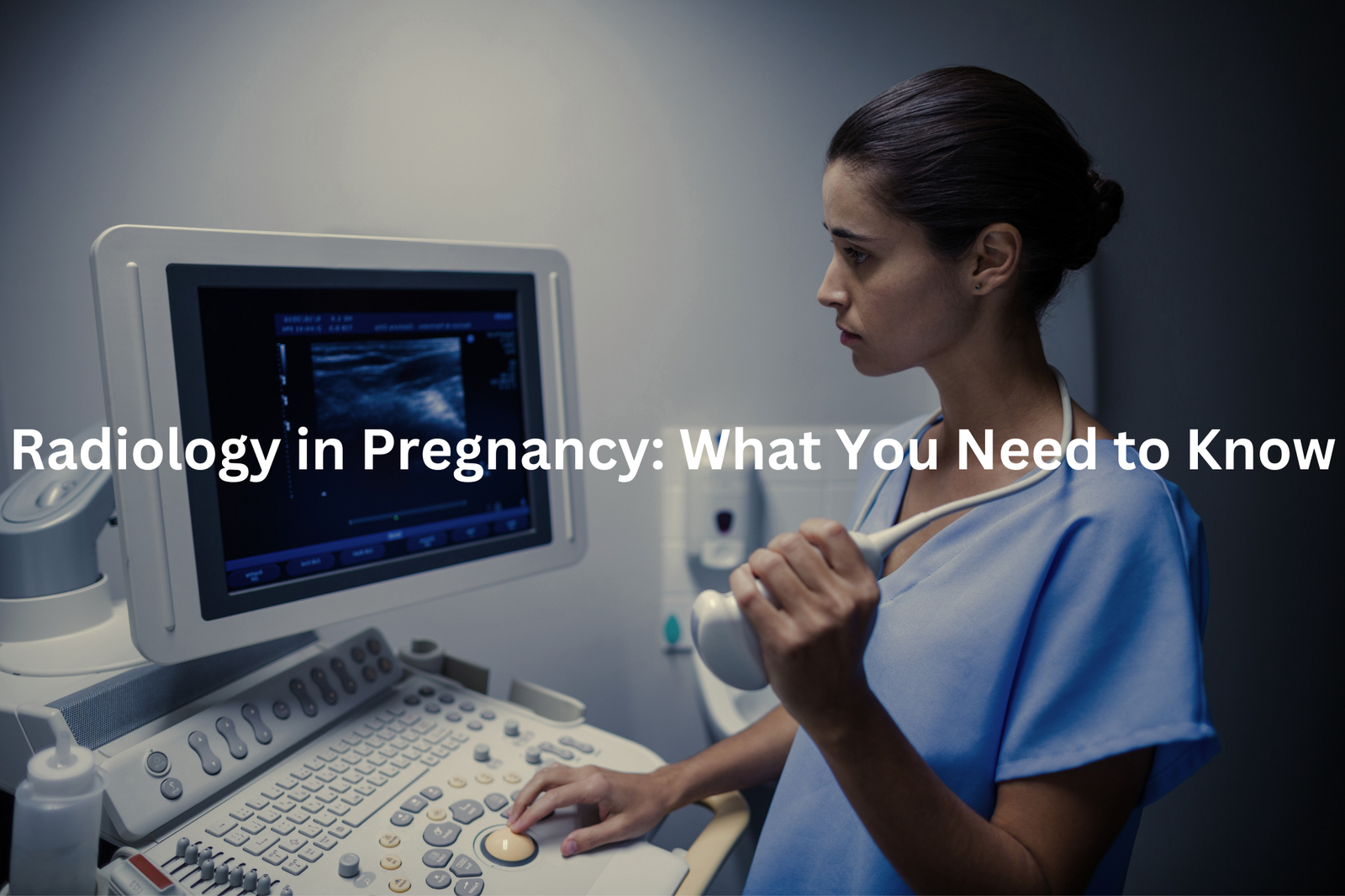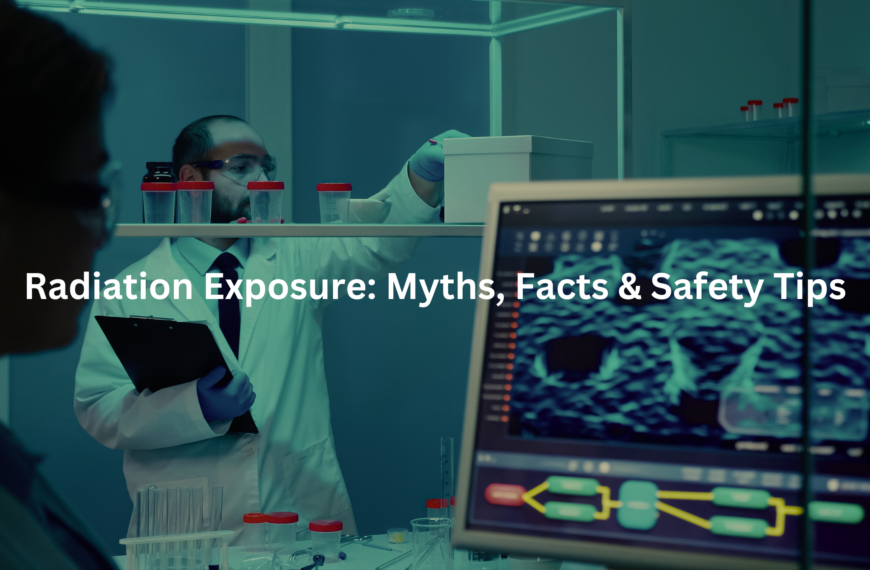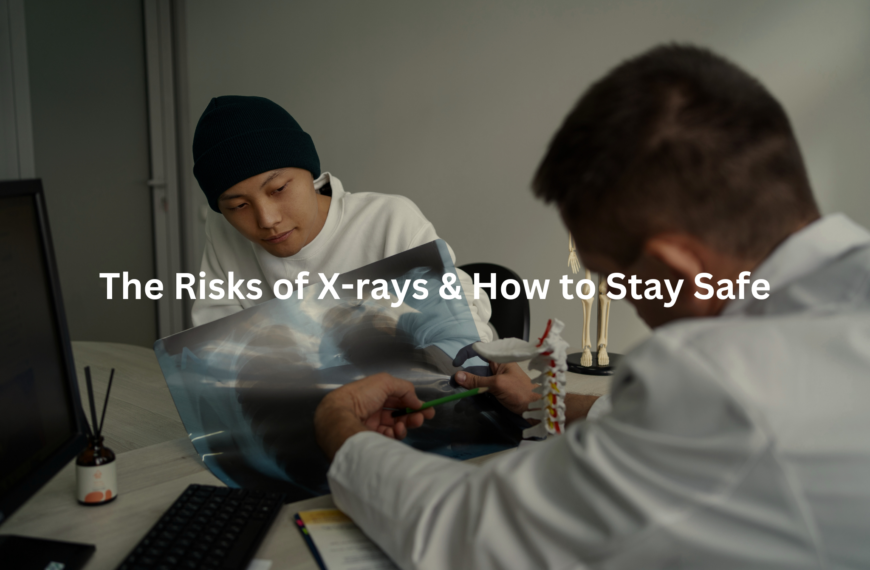Radiology during pregnancy—Is it safe? Learn when imaging tests are needed, what risks exist, and how to protect both mum and baby.
Pregnant women often need medical imaging tests, and this brings up worries about radiation safety. While X-rays and CT scans use radiation (measured in millisieverts), doctors carefully control the dose to protect both mother and baby. A chest X-ray gives off just 0.1 millisieverts, that’s less radiation than a long-distance flight.
Medical staff use lead shields and special equipment settings to keep exposure low. The benefits of needed scans usually outweigh any small risks, but doctors will always pick the safest option for each case. If you’re curious about what safety measures to take or what types of imaging are safer, keep reading!
Key Takeaway
- Imaging tests can help, but they must be necessary.
- Ultrasound and MRI are safer options as they don’t use radiation.
- Always talk to your doctor about any concerns.
What is Radiology and Why is it Important?
Radiation in pregnancy needs careful handling. Medical imaging helps doctors see inside the body, but pregnant patients need extra care. X-rays, CT scans, and other radiation-based tests can affect growing babies.
Different scans give different radiation doses. A chest X-ray delivers 0.1 millisieverts (mSv), while a CT scan gives about 10 mSv. The first three months of pregnancy are most sensitive, when the baby’s organs are developing.
Medical staff follow these safety steps:
- Check if non-radiation tests like ultrasound or MRI work instead
- Use protective shields over the belly
- Adjust machine settings to lower radiation levels
- Schedule tests at safer times during pregnancy
The risk of childhood cancer from medical radiation is small but real. Most scans during pregnancy don’t cause problems, but doctors must balance getting good images with keeping mums and bubs safe. Pregnant patients should always tell their healthcare team about their pregnancy before any scans.
The Risks of Radiation Exposure
Sources: Radiological Training Service.
Radiation exposure during pregnancy needs careful thought(1). While standard X-rays deliver less than 1 milligray (mGy) to an unborn baby, CT scans can expose the fetus to higher doses, up to 25 mGy for abdominal scans.
Medical professionals follow the “day rule” when radiation might exceed 1 millisievert (mSv). They assess risks, adjust settings, and use protective shielding to minimise exposure. Alternative imaging methods like ultrasound and MRI don’t use radiation at all, making them safer choices during pregnancy.
Key points for expectant mothers:
• Regular X-rays pose minimal risk
• CT scans require careful consideration
• Ultrasound and MRI are preferred options
• Protective measures reduce exposure
Healthcare providers choose imaging based on medical necessity. The benefits of diagnostic scans often outweigh potential risks. Pregnant patients should discuss concerns with their doctor and ask about radiation-free alternatives when possible.
Alternatives to X-rays and CT Scans
Medical imaging during pregnancy requires careful thought. Different scans serve different needs, each with its own safety profile.
Ultrasound stands as the first choice for pregnancy scans. The process uses sound waves (not radiation) to create pictures of the growing baby. It shows movement in real-time, making it perfect for checking the baby’s heart, growth, and position.
MRI offers another safe option. The machine’s strong magnets build detailed images without any radiation exposure. Doctors often pick MRI to examine the placenta or check the baby’s brain development.
X-rays and CT scans come with small radiation doses. A chest X-ray delivers about 0.01 mGy to the baby, while a pelvic CT might reach 25 mGy. That’s why doctors limit these scans during pregnancy.
Most pregnancy checks need just ultrasound or MRI. These tools give doctors the information they need while keeping mum and bub safe.
Importance of Discussing Concerns
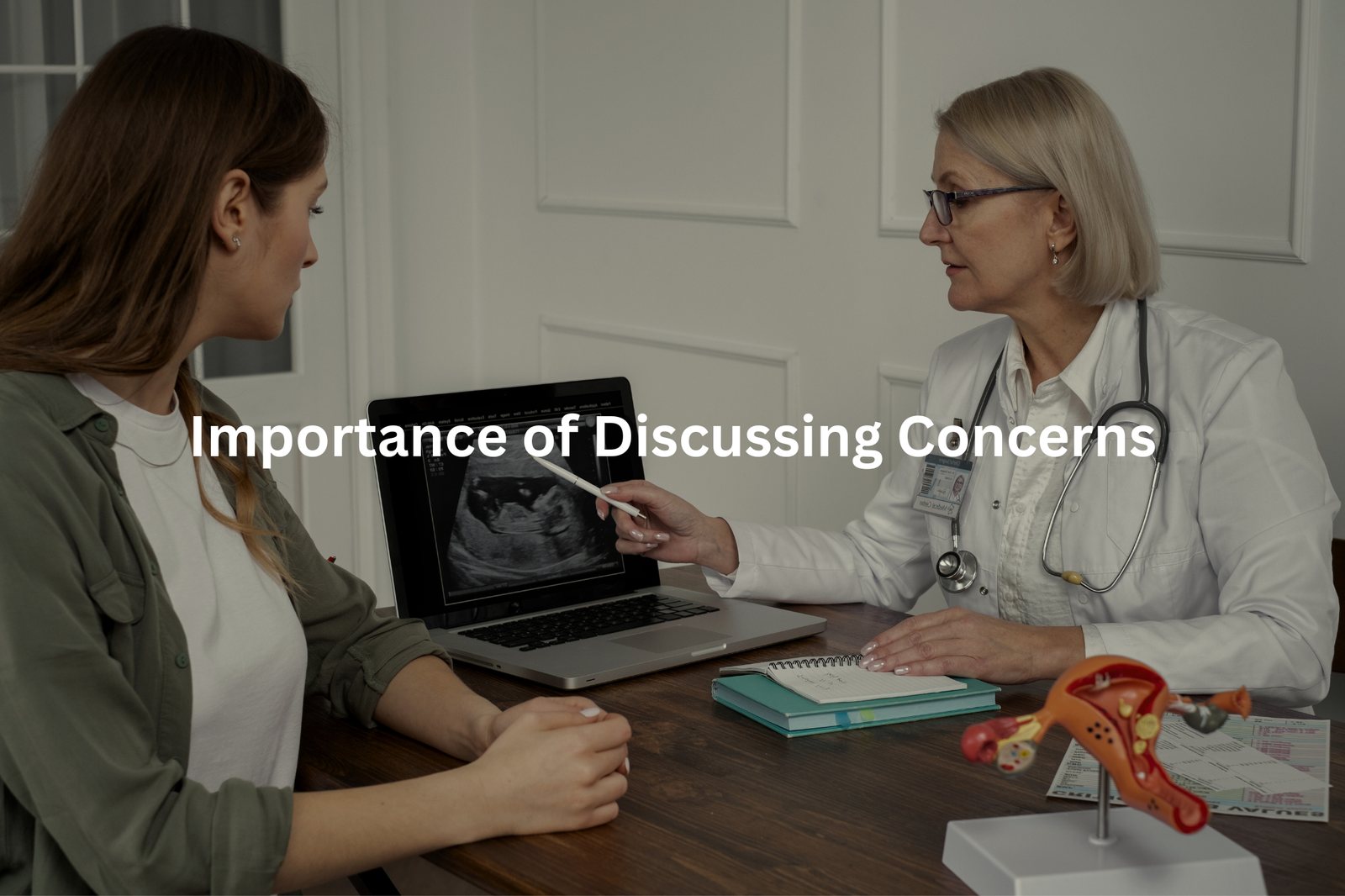
Medical scans during pregnancy need careful thought. The balance between getting needed information and protecting the growing baby sits at the heart of every decision.
Healthcare teams follow strict steps for pregnant patients. They start with non-radiation options like ultrasounds or MRIs when possible. These methods give clear pictures without any radiation exposure.
If X-rays or CT scans become necessary (due to medical emergencies), doctors use the lowest possible radiation settings. A lead shield, weighing about 3 kilograms, protects the belly area during these procedures.
Different scans produce different radiation levels(2):
• Dental X-ray: 0.01 mGy
• Chest X-ray: 0.1 mGy
• Pelvic CT scan: up to 25 mGy
Medical staff monitor radiation exposure closely, making sure benefits outweigh any risks. Open communication between doctors and patients helps create the safest path forward for both mum and baby.
Guidelines for Imaging Pregnant Patients
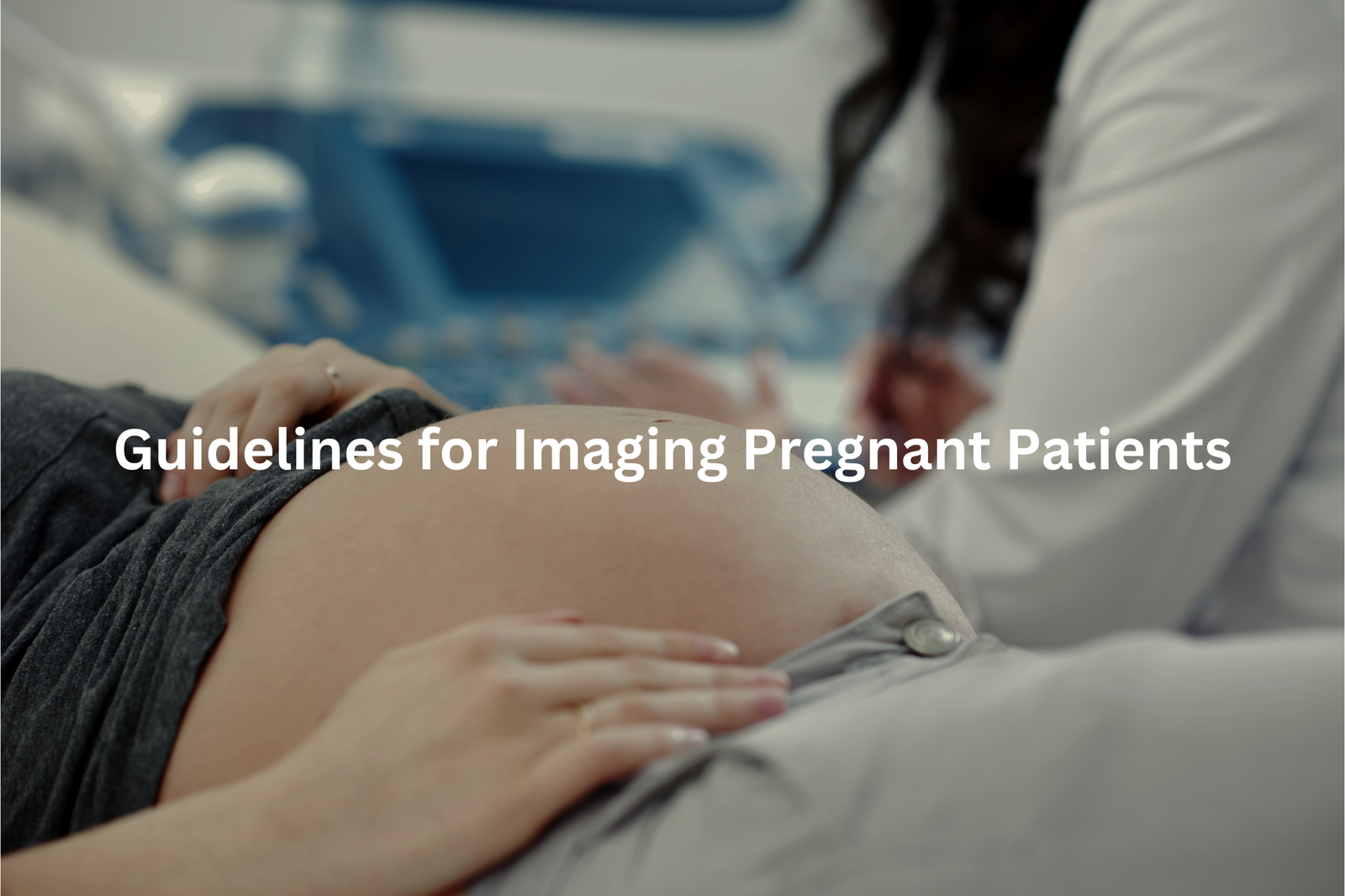
Medical staff ask about pregnancy before any scan. It’s their first step – always. X-rays and growing babies don’t get along.
The process follows clear steps:
- Check pregnancy status (this happens before anything else)
- Look at other options, like ultrasound
- If X-rays are needed, use the lowest possible dose
Different scans give different amounts of radiation:
- Arm or leg X-ray: 0.01 mGy
- Chest X-ray: 0.1 mGy
- CT scan of the pelvis: up to 25 mGy
Medical teams must balance getting good images with keeping radiation low. They might switch to ultrasound or MRI (machines that don’t use radiation) if there’s any pregnancy chance.
Patients should tell their doctors about possible pregnancy, even if they’re not sure. This helps the medical team pick the safest type of scan. Sometimes waiting a few days makes more sense than rushing into tests.
Understanding Lifetime Risk
Medical imaging during pregnancy brings up questions about risk(3). The numbers paint a clear picture – natural childhood cancer rates sit at 1 in 500, while imaging might shift that to 1 in 200.
Different scans carry different risks (measured in mGy):
• Dental X-rays: 0.01 mGy
• Chest X-rays: 0.1 mGy
• Abdominal CT scans: 10-25 mGy
Location matters too. Head CT scans pose minimal risk to an unborn baby, while pelvic scans need more careful consideration. Medical teams choose the safest option first, adjusting settings to keep radiation exposure low.
The decision depends on medical necessity. A pulmonary embolism needs immediate attention, while a minor injury might not need imaging at all.
Doctors and patients work together to find the right balance. Open discussion helps create the safest path forward, weighing the mother’s health needs against potential risks to the baby.
FAQ
What is the CT dose during pregnancy?
The CT dose during pregnancy can vary depending on the type of CT scan and the specific body part being imaged. Generally, the radiation dose from a CT scan is quite low and is not considered harmful to the unborn child. However, it’s important to discuss the need for a CT scan with your healthcare provider to ensure the benefits outweigh any potential risks.
How can I reduce the radiation dose from a CT scan during pregnancy?
There are a few ways to reduce the radiation dose from a CT scan during pregnancy. Using low-dose CT protocols, adjusting the tube current, and limiting the scan length can all help lower radiation exposure. Additionally, your healthcare provider may recommend using alternative imaging tests like ultrasound or MRI when possible. It’s important to work closely with your provider to determine the safest approach.
What is the risk of cancer from a CT scan during pregnancy?
The risk of cancer from a CT scan during pregnancy is generally considered very low. The LNT model suggests there is no safe level of radiation exposure, but the radiation doses from a typical CT scan are much lower than what is known to cause harm. Your overall lifetime cancer risk may be slightly increased, but the benefits of the CT scan often outweigh this small potential risk.
How does the radiation dose from a CT scan compare to other imaging tests during pregnancy?
Compared to other imaging tests like X-rays or nuclear medicine scans, the radiation dose from a CT scan is generally higher. However, the dose is still quite low and considered safe for the unborn child. Ultrasound and MRI are usually preferred during pregnancy as they do not use ionising radiation. Your healthcare provider will work with you to determine the most appropriate imaging test based on your specific needs and the potential risks and benefits.
What are the guidelines for CT scans during pregnancy?
The Royal Australian and New Zealand College of Radiologists (RANZCR) provides guidelines for the use of CT scans during pregnancy. They recommend that CT scans only be performed when medically necessary and that the radiation dose be kept as low as reasonably achievable. Providers are encouraged to use low-dose CT protocols and to consult with a radiologist to ensure the benefits outweigh the potential risks. The guidelines also emphasise the importance of informed consent and shared decision-making with the patient.
Conclusion
Medical imaging during pregnancy requires careful planning. Doctors weigh the risks and benefits before choosing any scan, with radiation exposure being a key factor. Non-radiation options like ultrasound (which uses sound waves) and MRI (magnetic resonance imaging) offer safer alternatives for checking baby’s growth and health. Pregnant patients should talk with their healthcare team about any concerns regarding scans, as each case needs different approaches based on medical needs.
References
- https://www.pregnancybirthbaby.org.au/radiation-exposure-during-pregnancy
- https://raisingchildren.net.au/pregnancy/health-wellbeing/tests-appointments/tests-in-pregnancy
- https://www.insideradiology.com.au/radiation-risk-preg/

